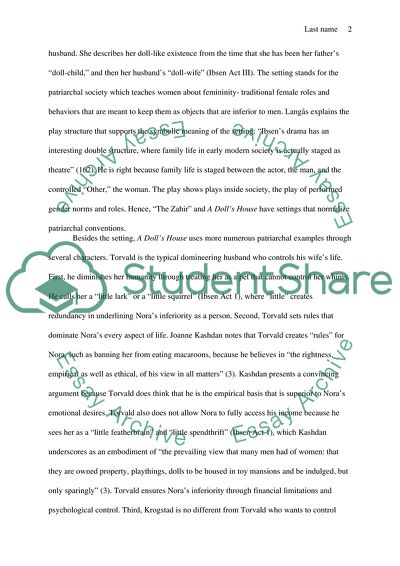The Depiction of the Theme of Social Criticism Literature review Example | Topics and Well Written Essays - 1750 words. https://studentshare.org/literature/1815323-play-analysis-of-a-doll-house
The Depiction of the Theme of Social Criticism Literature Review Example | Topics and Well Written Essays - 1750 Words. https://studentshare.org/literature/1815323-play-analysis-of-a-doll-house.


